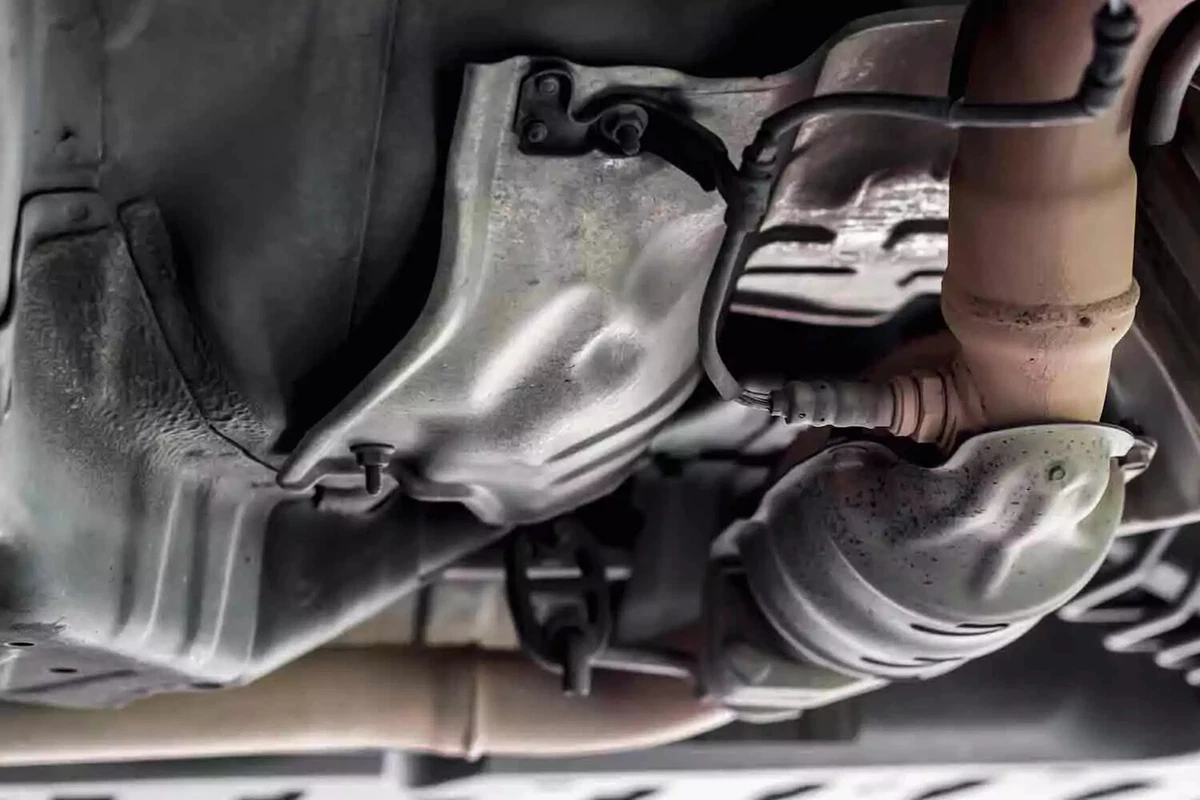An oxygen sensor, also called an O2 sensor, is responsible for measuring the amount of air in your engine’s vital air-fuel mixture. A failure can turn into a misfire, produce excess carbon in the exhaust system, and give you poor fuel economy. All of these issues can be solved by replacing the bad sensor - opens in new window or tab..

A downstream oxygen sensor with the bung next to the catalytic converter
O2 Sensor Considerations
Some cars have two oxygen sensors. The upstream sensor sits between the engine and the catalytic converter and measures the amount of oxygen in the combustion chamber. The downstream sensor measures the oxygen coming out of the catalytic converter to ensure that the converter is functioning properly.
It’s not an absolute must to replace both sensors if only one is bad. But in the long run, it saves time to swap in the upstream and downstream sensor at the same time.

An NTK wideband oxygen sensor
There are three types of oxygen sensors.
Narrowband: If you have an older vehicle with an early fuel injection system, chances are good that you need a narrowband O2 sensor. These sensors use a binary rich/lean signal and are much simpler than modern units.
Wideband: Most late-model vehicles use a wideband sensor. Wideband sensors are more precise than narrowband sensors and allow for an incremental adjustment of the air-fuel ratio.
Heated: To get an accurate measurement of your vehicle’s air-fuel ratio, the O2 sensor needs to be at the same temperature as the engine. Most new sensors contain a heating element, so there is no delay in getting a proper reading.
How to Find an Oxygen Sensor That Fits Your Car

A four-piece upstream and downstream Bosch oxygen sensor kit for 2006-2013 BMWs
Before you can replace your oxygen sensor, confirm the size that’s compatible with your vehicle. While some universal sensors are available, they often need adapters for the wiring harness and may not provide the ideal seal between the sensor and the exhaust system.
Your vehicle’s owners manual might give you a part number for your sensor. We recommend using the eBay Parts Finder - opens in new window or tab.. Enter your year, make, model, engine, and trim to display O2 sensors that fit your car.
How much should you spend on a new oxygen sensor?
Depending on whether you choose an aftermarket or original equipment manufacturer (OEM) sensor, expect to spend between $20 and $100.
If your vehicle needs more than one sensor or if you need specific tools to do the replacement, the total O2 sensor cost will be between $60 and $300 total. Check our step-by-step how-to guide and video - opens in new window or tab. for detailed instructions about replacing the sensor.
Other Parts to Buy When You Change Oxygen Sensors

Oxygen sensor sockets are sold as single units or as a kit, like this comprehensive ten-piece set.
You might need to pick up some tools if you’re replacing a bad O2 sensor, which can cause downstream damage. Consider these additional items.
Adapter harness: If you use a universal O2 sensor for your replacement, you might find that the wiring does not reach like it did for the old one. In that case, an extension harness adapter will help you make the connection without having to replace the entire wiring system.
Anti-seize compound: Over time, the carbon buildup in your exhaust system can fuse the oxygen sensor to the metal and make it incredibly difficult to remove. To prevent that from happening, apply an anti-seize compound when you install your new sensor.
Bung: Oxygen sensors screw into place with a bung that is welded to the exhaust pipe. If your O2 sensor has been bad for a while, the threads in the bung may have become worn and unusable and it will need to be replaced. A new bung like ensures a tight fit and no leaks.
Catalytic converter: A bad O2 sensor can prematurely wear out your catalytic converter. Fuel that’s unburnt in the engine makes its way into the catalytic converter and burns up, turning into carbon deposits. You may need a new catalytic converter. A replacement ensures that your car passes inspection and runs as clean as possible.
O2 sensor socket: To get the old sensor out of your exhaust pipe and put in the new one, you want a socket that is specifically designed for the job. While you may be able to use an open-end wrench, an O2 sensor socket ensures that you don’t strip the old or new sensor in the process of the replacement.
Share your feedback
This article is meant to provide general guidance only. Automotive maintenance, repair, upgrade, and installation may depend on vehicle-specifics such as make and model. Always consult your owner's manual, repair guide for specific information for your particular vehicle and consider a licensed auto-care professional's help as well, particularly for advance repairs.




























































